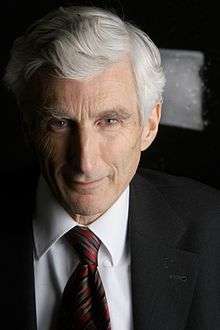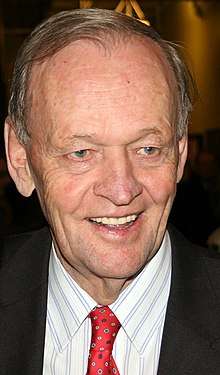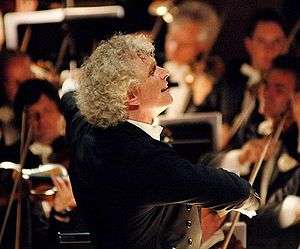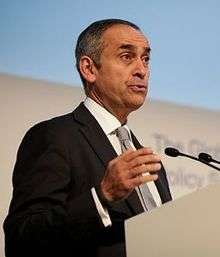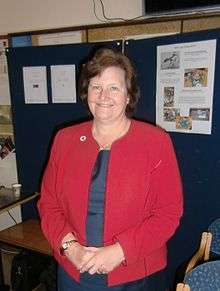Order of Merit
| Order of Merit Ordre du Mérite | |
|---|---|
.jpg) Badge and ribbon bow of the order | |
| Awarded by the monarch of the Commonwealth realms (since 1952) | |
| Type | Dynastic order |
| Motto | For Merit |
| Eligibility | All living citizens of the Commonwealth realms |
| Awarded for | At the monarch's pleasure |
| Status | Currently constituted |
| Sovereign | Queen Elizabeth II |
| First sovereign | King Edward VII |
| Grades | Member (OM) |
| Precedence | |
| Next (higher) | Dependent on state |
| Next (lower) | Dependent on state |
|
Ribbon of the order | |
The Order of Merit (French: Ordre du Mérite)[n 1] is an order of merit recognising distinguished service in the armed forces, science, art, literature, or for the promotion of culture. Established in 1902 by King Edward VII, admission into the order remains the personal gift of its Sovereign—currently Edward VII's great-granddaughter, Queen Elizabeth II—and is restricted to a maximum of 24 living recipients from the Commonwealth realms, plus a limited number of honorary members.[1][2] While all members are awarded the right to use the post-nominal letters OM and wear the badge of the order,[3] the Order of Merit's precedence among other honours differs between countries.
History
The first mention of a possible Order of Merit was made following the Battle of Trafalgar in 1805, in correspondence between First Lord of the Admiralty Lord Barham and William Pitt, though nothing came of the idea.[4] Later, it was thought by Queen Victoria, her courtiers, and politicians alike,[5] that a new order, based on the Prussian order Pour le Mérite, would make up for the insufficient recognition offered by the established honours system to achievement outside of public service, in fields such as art, music, literature, industry, and science.[4]
Victoria's husband, Albert, Prince Consort, took an interest in the matter; it was recorded in his diary that he met Robert Peel on 16 January 1844 to discuss the "idea of institution of a civil Order of Merit" and, three days later, he conferred with the Queen on the subject.[6] The concept did not wither and, on 5 January 1888, British prime minister Lord Salisbury submitted to the Queen a draft constitution for an Order of Merit in Science and Art, consisting of one grade split into two branches of knighthood: the Order of Scientific Merit for Knights of Merit in Science, with the post-nominal letters KMS, and the Order of Artistic Merit for Knights of Merit in Art, with the post-nominal letters KMA. However, Sir Frederic Leighton, President of the Royal Academy, advised against the new order, primarily because of its selection process.[7]
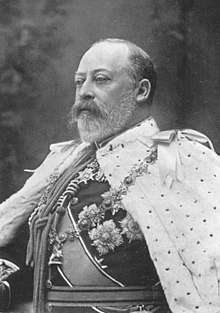
Victoria's son, King Edward VII, eventually founded the Order of Merit on 26 June 1902 (the date for which his coronation had been originally planned[8]) as a means to acknowledge "exceptionally meritorious service in Our Navy and Our Army, or who may have rendered exceptionally meritorious service towards the advancement of Art, Literature and Science".[9] All modern aspects of the order were established under his direction, including the division for military figures.[3]
From the outset, prime ministers attempted to propose candidates or lobbied to influence the monarch's decision on appointments, but the Royal Household adamantly guarded information about potential names.[3] After 1931, when the Statute of Westminster came into being and the Dominions of the British Empire became independent countries, equal in status to the UK, the Order of Merit continued as an honour open to all these realms and, in many, became a part of their national honours systems.[10][11] The order's statutes were amended in 1935 to include members of the Royal Air Force and, in 1969, the definition of honorary recipients was expanded to include members of the Commonwealth of Nations that are not realms.
From its inception, the order has been open to women, Florence Nightingale being the first woman to receive the honour, in 1907. Several individuals have refused admission into the Order of Merit, such as Rudyard Kipling, A. E. Housman, and George Bernard Shaw. To date, Prince Philip, Duke of Edinburgh, remains the youngest person ever inducted into the Order of Merit, having been admitted by Queen Elizabeth II in 1968, when he was 47 years of age.[3]
Eligibility and appointment
.jpg)
All citizens of the Commonwealth realms are eligible for appointment to the Order of Merit.[10] There may be, however, only 24 living individuals in the order at any given time, not including honorary appointees, and new members are personally selected by the reigning monarch of the realms, currently Queen Elizabeth II, with the assistance of her private secretaries;[3] the order has thus been described as "quite possibly, the most prestigious honour one can receive on planet Earth."[12] Within the limited membership is a designated military division, with its own unique insignia; though it has not been abolished, it is currently unpopulated, Lord Mountbatten of Burma having been the last person so honoured.[3] Honorary members form another group, to which there is no numerical limit, though such appointments are rare; individuals from countries in the Commonwealth of Nations that are not headed by Elizabeth II are therefore considered foreigners, and thus are granted only honorary admissions, such as Nelson Mandela (South Africa) and Mother Teresa (India).[1]
Upon admission into the Order of Merit, members are entitled to use the post-nominal letters OM and are entrusted with the badge of the order, consisting of a golden crown from which is suspended a red enamelled cross, itself centred by a disk of blue enamel, surrounded by a laurel wreath, and bearing in gold lettering the words FOR MERIT;[13] the insignia for the military grouping is distinguished by a pair of crossed swords behind the central disk.[2] The ribbon of the Order of Merit is divided into two stripes of red and blue. Men wear their badges on a neck ribbon, while women carry theirs on a ribbon bow pinned to the left shoulder, and aides-de-camp may wear the insignia on their aiguillettes.[13] Since 1991, it has been required that the insignia be returned upon the recipient's death.[14]
Current members
- Sovereign: Queen Elizabeth II
- Secretary and Registrar: The Lord Fellowes GCB GCVO QSO PC
Substantive members
Honorary members
There have been no honorary members of the Order of Merit since the death of the last such member, Nelson Mandela, in December 2013.
Precedence
As the Order of Merit is open to the citizens of sixteen different countries, each with their own system of orders, decorations, and medals, the order's place of precedence varies from country to country. While, in the United Kingdom, the order's postnominal letters follow those of Knights and Dames Grand Cross of the Order of the Bath, membership in the Order of Merit itself gives members no place in any of the orders of precedence in the United Kingdom. However, it has been claimed by Stanley Martin, in his book The Order of Merit 1902–2002: One Hundred Years of Matchless Honour, that the Order of Merit is the pinnacle of the British honours system.[22] Similarly, though it was not listed in the Canadian order of precedence for honours, decorations, and medals until December 2010,[23] except relating to those who were appointed to the order prior to 1 June 1972,[24] Christopher McCreery, an expert on Canadian honours and secretary to the Lieutenant Governor of Nova Scotia, stated that the Order of Merit was the highest civilian award for merit a Canadian could receive.[25][26]
Some orders of precedence are as follows:
Notes
- ↑ For use in Canada, in accordance with the country's policy of official bilingualism.
Citations
- 1 2 The Royal Household. "Order of Merit". Queen's Printer. Retrieved 28 July 2009.
- 1 2 Office of the Governor General of Canada. "The Order of Merit". Queen's Printer for Canada. Retrieved 4 October 2017.
- 1 2 3 4 5 6 Jackson, Michael D. (2007), "The Order of Merit 1902–2002: One Hundred Years of Matchless Honour" (PDF), Canadian Monarchist News, Toronto: Monarchist League of Canada, Summer 2007 (26): 15, archived from the original (PDF) on 8 July 2009, retrieved 28 July 2009
- 1 2 Martin 2007, p. 11
- ↑ Martin 2007, p. 12
- ↑ Martin 2007, p. 13
- ↑ Martin 2007, pp. 18–20
- ↑ Martin 2007, p. 1
- ↑ Mountbatten, Philip (2007), "Foreword", written at London, in Martin, Stanley, The Order of Merit: One Hundred Years of Matchless Honour, New York: I.B. Tauris & Co. Ltd., pp. xvii, ISBN 978-1-86064-848-9
- 1 2 Office of the Governor General of Canada. "Honours > Orders > Order of Merit". Queen's Printer for Canada. Retrieved 28 March 2014.
- ↑ McCreery, Christopher (2005). The Canadian Honours System. Toronto: Dundurn Press. p. 98. ISBN 9781550025545.
- ↑ Editorial Board (15 July 2009), "Order Worthy?", National Post, retrieved 29 July 2009
- 1 2 Clarence House. "For Children > Medals and Uniforms > Medals > Picture 4: The Order of Merit". Queen's Printer. Retrieved 29 July 2009.
- ↑ Martin 2007, p. 56
- ↑ Curry, Bill (26 April 2013). "Prince Philip first Royal to be awarded Order of Canada". The Globe and Mail.
- 1 2 3 4 5 6 7 8 9 10 11 12 13 14 15 The Royal Household. "The Queen and the UK > Queen and Honours > Order of Merit > List of current members". Queen's Printer. Retrieved 15 August 2009.
- ↑ "Queen gives Chrétien Order of Merit". CBC. 13 July 2009. Retrieved 15 August 2009.
- ↑ The Royal Household. "Mr Neil MacGregor appointed to the Order of Merit, 4 November 2010". Queen's Printer. Retrieved 4 November 2010.
- 1 2 The Royal Household. "Appointments to the Order of Merit". Queen's Printer. Archived from the original on 7 January 2012. Retrieved 1 January 2012.
- 1 2 "New Year Honours 2013: The Full List". The Guardian. 30 December 2013. Retrieved 30 December 2013.
- 1 2 3 "New Year's Honours 2016". 30 December 2015. Retrieved 3 January 2016.
- ↑ Jackson, Michael D. (2007). "The Order of Merit 1902–2002: One Hundred Years of Matchless Honour by Stanley Martin, CD" (PDF). Canadian Monarchist News. Toronto: Monarchist League of Canada. Summer 2007 (26): 15. Archived from the original (PDF) on 4 March 2016. Retrieved 15 December 2013.
- ↑ Government of Canada (8 December 2010). "Order of Merit (O.M.) Order". Canada Gazette. Queen's Printer for Canada. 144 (25). SI/2010-88. Archived from the original on 19 December 2010. Retrieved 10 December 2010.
- ↑ Office of the Governor General of Canada. "Honours > Order of Precedence". Queen's Printer for Canada. Archived from the original on 9 October 2006. Retrieved 24 July 2009.
- ↑ McCreery, Christopher (2005), The Order of Canada: Its Origins, History and Development, Toronto: University of Toronto Press, ISBN 0-8020-3940-5
- ↑ Taber, Jane (15 July 2009), "Chrétien 'thrilled' by rare honour from Queen", The Globe and Mail, retrieved 24 July 2009
- ↑ New Zealand Defence Force. "Medals Home > general medals information > order of wear". Queen's Printer for New Zealand. Retrieved 30 July 2009.
- ↑ "No. 56878". The London Gazette (Supplement). 17 March 2003. p. 3351.
References
- Martin, Stanley (2007), The Order of Merit: One Hundred Years of Matchless Honour, New York City: I.B. Tauris & Co. Ltd., ISBN 978-1-86064-848-9
External links


.jpg)
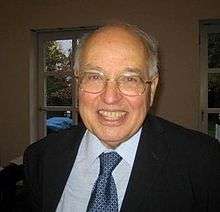

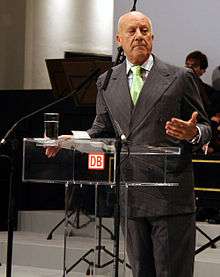
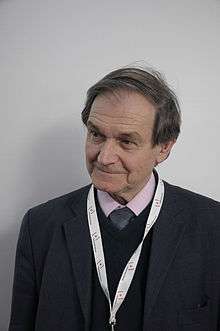
.jpg)
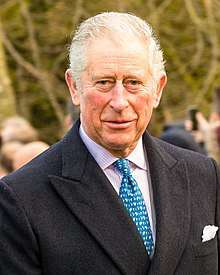


.jpg)

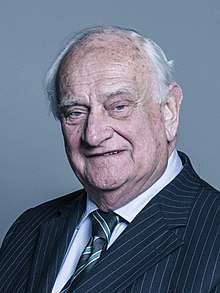
.jpg)
